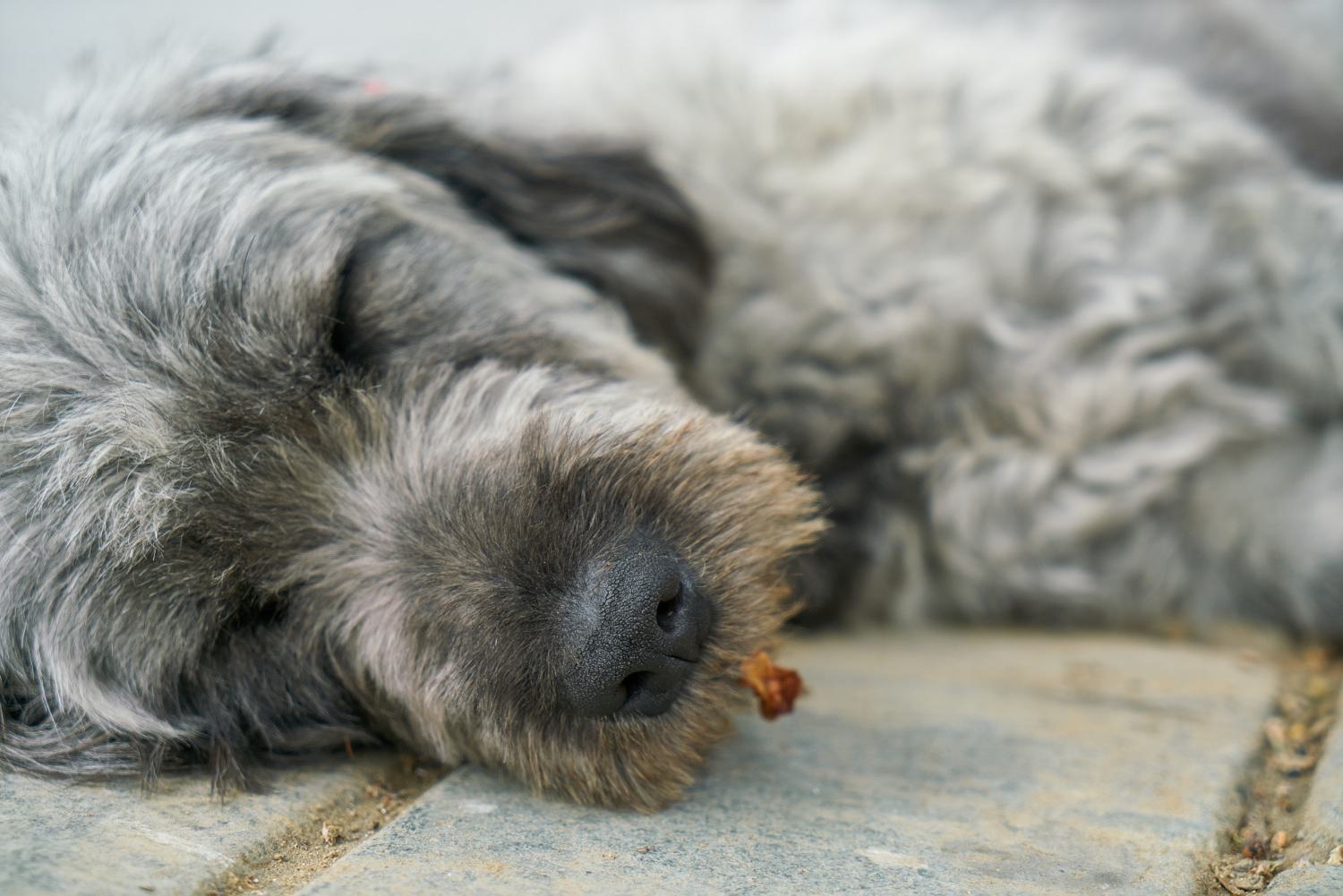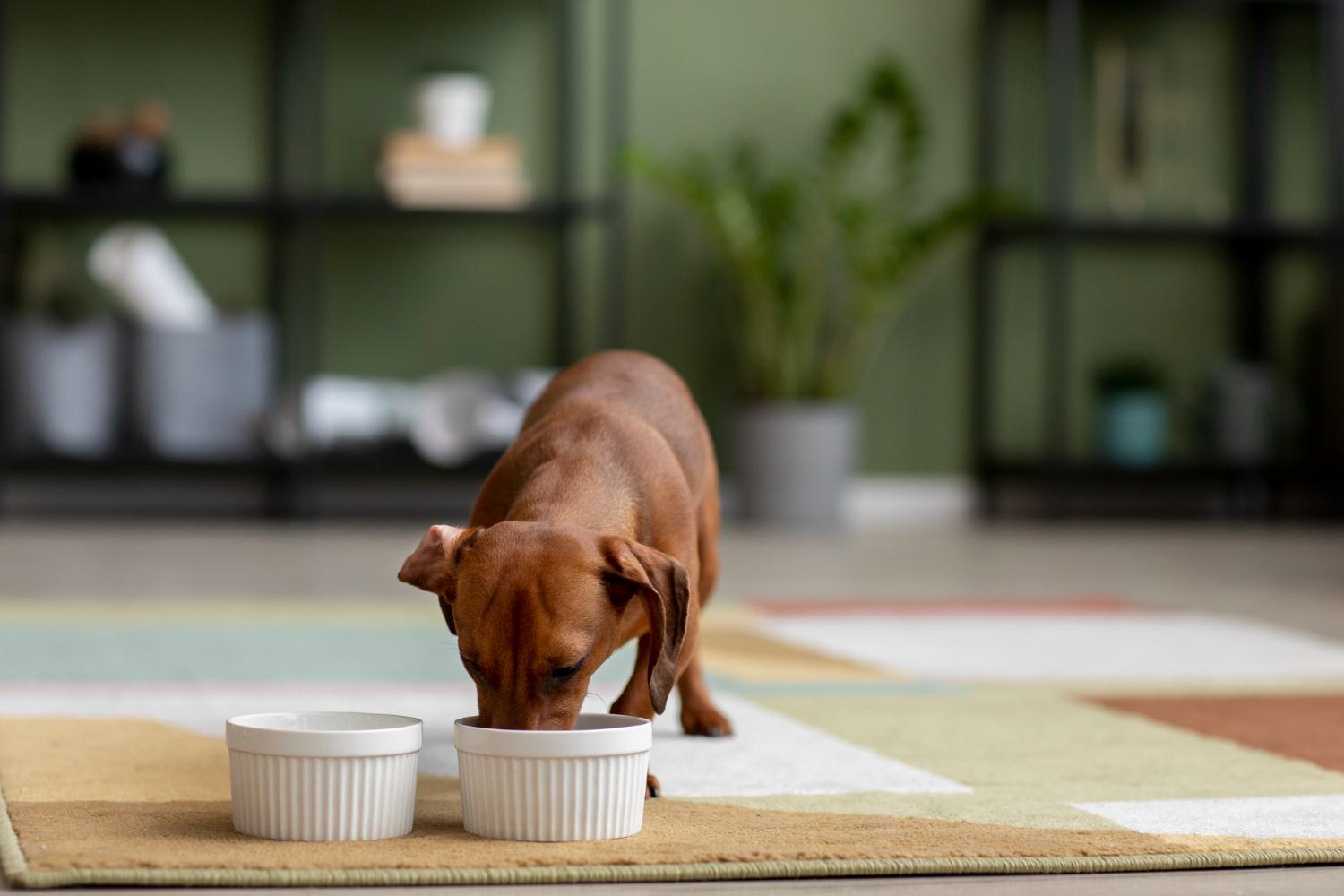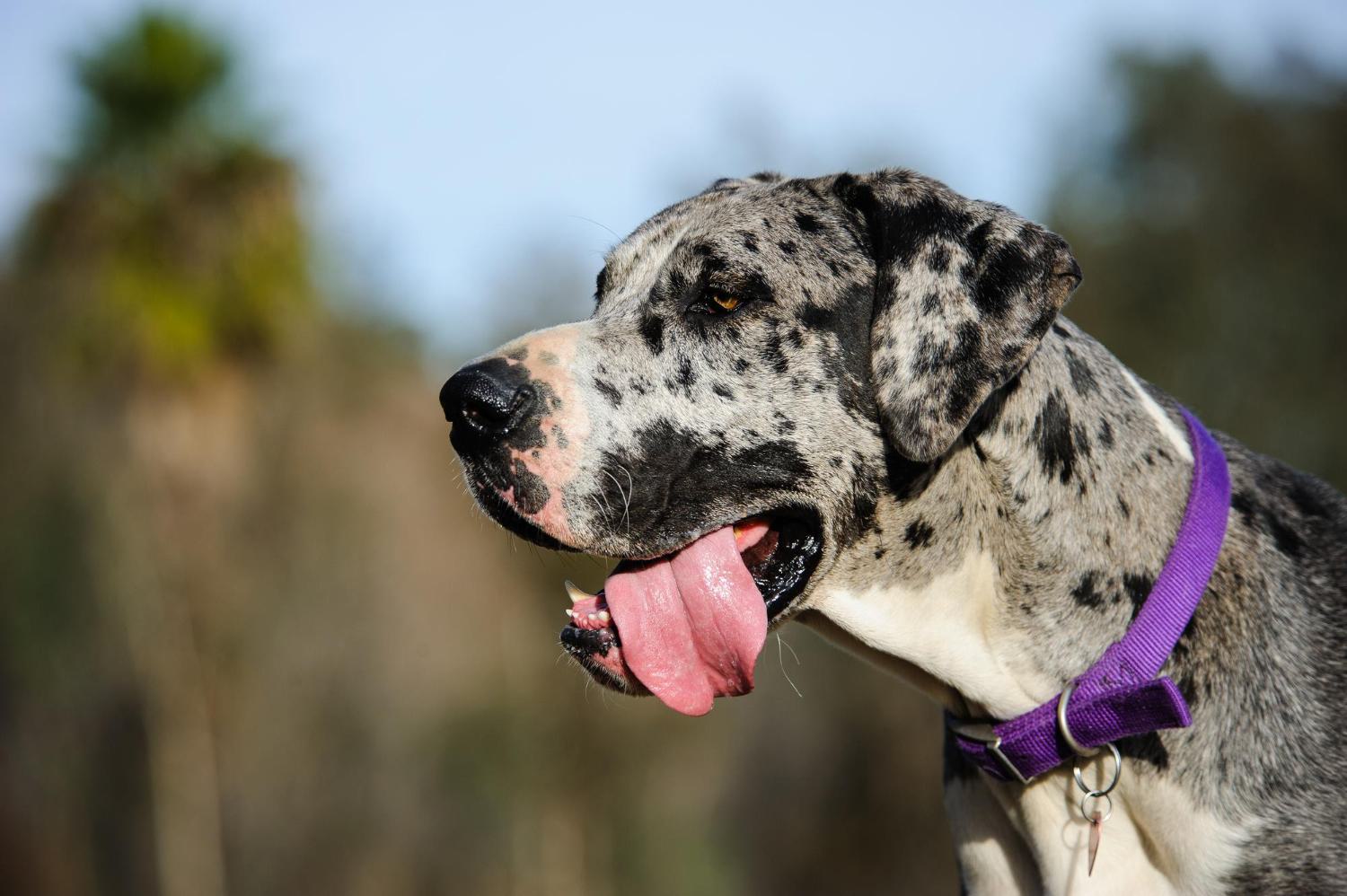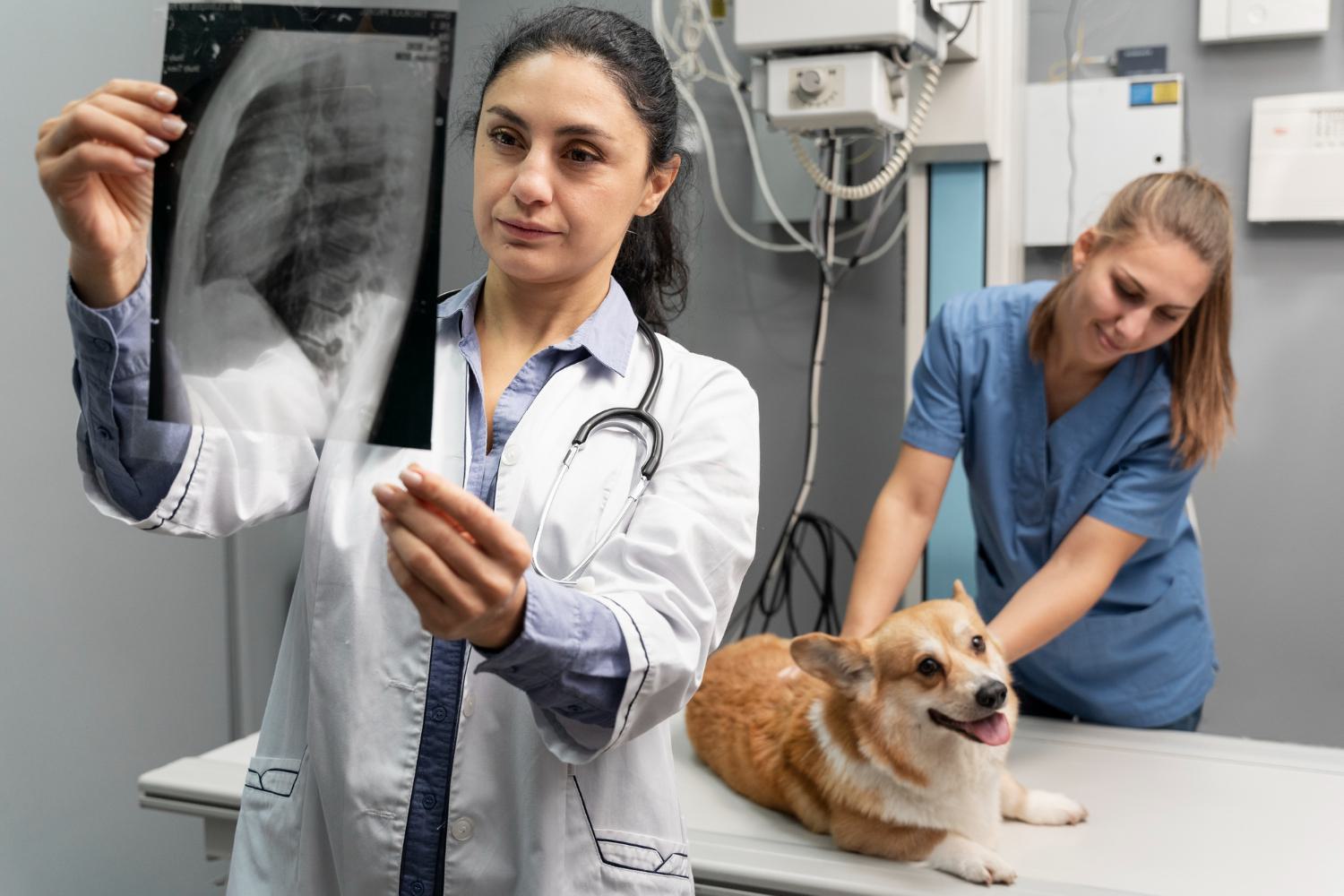Canine Gastric Dilatation: Causes and Treatment Options

By Evelyn Harcourt
février 03, 2025 - 1 min read
Gastric Dilatation, colloquially known as ‘bloat,’ is a worry for many owners, particularly those who have deep-chested dogs. This condition develops rapidly and can be fatal within hours.
Thankfully, when owners seek prompt veterinary care, the prognosis is good, and figures show a survival rate of about 80%. This article discusses the signs to watch out for, what treatment involves, and the preventative measures that can be taken.
What is Canine Gastric Dilatation?
Gastric Dilatation occurs when the stomach fills with gas, fluid, and/or food and becomes much larger than usual. This can lead to the stomach flipping on its mesenteric axis. When this happens, gas cannot escape, resulting in devastating consequences.
A GDV (Gastric Dilatation Volvulus) can lead to compression of the surrounding blood vessels, tissue necrosis, shock, and even death. This can occur within a matter of hours, which is why this is such a feared condition within the dog-owning community.
Gastric Dilatation vs. Bloat: What’s the Difference?
It is important to mention that not all cases of gastric dilatation will progress. For some lucky dogs, while their stomach may fill with gas, it won’t flip over. For these individuals, they can pass the gas by burping and farting, with no lasting effects.
We usually use the term ‘bloat,’ or GDV, to refer to those cases whereby the stomach has flipped over and gas is unable to exit the body. This is a much more serious condition requiring immediate veterinary intervention.
Causes of Canine Gastric Dilatation
Interestingly, there is still much debate surrounding what causes this condition, and the answer is not always obvious.
Factors That Contribute to Gastric Dilatation
There are some known risk factors that are important to keep in mind.
Eating Too Quickly or Large Meals
Rapidly gobbling up large amounts of food means lots of air will be swallowed simultaneously. This excess gas in the stomach can lead to gastric dilation.
For this reason, it is advised to space meals out during the day. Investing in a slow-feeding dog bowl is a no-brainer for dogs who wolf their meals. These bowls contain projections (such as swirls or pegs) that make it harder for a dog to eat quickly.

Exercise After Eating
Exercising right after finishing a meal is a bad idea. With exercise, the dog will pant, which leads to air entering the stomach. Lots of movement can also cause the stomach to swing. A heavy stomach filled with food is likelier to rotate on its axis fully.
Stress or Anxiety in Dogs
Anxious dogs tend to pant and may also display behaviours such as pacing and restlessness. It can help to teach your dog to settle after a meal, which may mean spending time in their bed or crate.
Breeds Prone to Gastric Dilatation
Certain dogs are more prone to bloating than others. One of the highest risk factors is being closely related to a dog who has experienced an episode of bloat. The older a dog is, the greater its chances of developing a GDV.
Large and Deep-Chested Breeds
Breeds, including the Great Dane, Irish Wolfhound, and Standard Poodle, are most at risk, thanks to their body shape. A whopping 37% of Great Danes will experience bloat in their lifetime.

Why Breed-Specific Anatomy Matters
A large and deep chest means there is more room for the stomach to swing and rotate behind the rib cage. Dogs with a tall and narrow body shape are far more likely to experience a GDV than those with a wider, shorter conformation.
Understanding the important role that body shape plays in this condition could lead to preventative breeding practices, especially in the highest-risk breeds.
Symptoms of Canine Gastric Dilatation
When a dog develops bloat, signs progress very rapidly. A dog who was acting normal before dinner could be at death’s door within mere hours. The sooner the emergency is identified, the better.
Early Warning Signs
The first signs are hard to miss, as a dog is uncomfortable and will act differently from normal. Contact your emergency vet immediately if you think your dog may develop a GDV.
Restlessness and Discomfort
As the stomach fills up and becomes more distended, a dog experiences increasing discomfort. It is unable to lie down and settle, may hunch over, and walk about aimlessly. It might also whine, pant, or act depressed.
Swollen Abdomen and Drooling
The stomach becomes more swollen and prominent, leading to visible abdominal swelling. The abdomen becomes hard like a drum and will ‘ping’ if flicked. This is very different from an abdomen that is filled with fluid and feels much softer.
Dogs start to feel nauseous and can drool excessively. This often means puddles of drool at the dog’s feet. They may retch continually, though nothing is brought up.
Advanced Symptoms
Before long, symptoms progress, and the dog becomes more visibly distressed.
Difficulty Breathing and Weakness
The circulatory system struggles with the stomach pressing on the nearby organs and blood vessels. There is less room for the lungs to expand, and the dog can find it hard to catch their breath.
Oxygen and carbon dioxide are not exchanged efficiently, and the muscles weaken. Owners may notice their dog seems woozy or off balance.
Collapse and Rapid Heartbeat
In the later stages of a GDV, the dog will experience circulatory collapse. The heart cannot pump enough blood and oxygen throughout the body, and the dog may go into shock.
The lack of oxygen can lead to tissue death, and the subsequent potassium release causes the heart to slow or stop.
Diagnosing Canine Gastric Dilatation
All vets are well aware of this serious medical condition and should be able to diagnose it rapidly.
Veterinary Examination and Diagnosis
Your vet will listen to your dog’s recent medical history and perform a quick physical exam. This will include feeling the abdomen and listening to it with their stethoscope.
Diagnostic Tools and Tests
What tests are performed will depend on how stable your dog is. Most vets perform an X-ray as the diagnostic test of choice.
A single abdominal X-ray can show the ‘double bubble’ of gas and the hugely inflated stomach that are pathognomonic for this condition.

Treatment Options for Canine Gastric Dilatation
About four out of five dogs who undergo surgery will survive to discharge. So, while treatment does not guarantee a good outcome, most dogs will fully recover.
Emergency Stabilization
If a dog is critically unwell and in shock when it first arrives at the clinic, it would not be a good surgical candidate right away. Some need to be stabilised before surgery can proceed.
Decompressing the Stomach
A stomach tube or large needle (percutaneous trocar) can be used to remove excess gas from the stomach. This is very effective but only temporarily affects the stomach, which will soon be refilled without further intervention.
Fluid Therapy for Shock
Intravenous fluids are started at a high rate to help support the circulatory system. As most patients are very large dogs, the advice is generally to use large bore catheters and two fluid bags concurrently.

Pain Relief
Something like an opioid works well to reduce pain and calm the dog. This should not be overlooked, especially as it can reduce oxygen demands on the body.
Surgical Intervention
Surgery is required to fix a GDV successfully. The dog is under general anaesthetic, and the stomach is un-twisted. Any dead (necrotic) tissue will need to be surgically removed.
Gastropexy Procedure
A gastropexy procedure can be performed at the same time to prevent a GDV in the future. The stomach is tacked to the right side of the abdominal wall, so it cannot rotate.
Indeed, this surgery can be done prophylactically in an at-risk dog who has never experienced an episode of bloat.
Recovery from Surgery
Dogs need time to rest and recover; the surgical wound will heal in 10-14 days. During this time, they may need to wear a pet t-shirt or buster collar to prevent them from licking at their sutures.
Preventing Gastric Dilatation in Dogs
Gastric dilatation cannot always be prevented, but some measures can be taken for higher-risk dogs.
Feeding and Meal Management
It was once thought that feeding from a height was beneficial, but this myth has been debunked. In fact, feeding in this manner can increase the risk of a GDV.
Using Slow Feeders and Smaller Meals
Owners should space meals out throughout the day and use slow feeder bowls to reduce the amount of air being inhaled and swallowed.
Avoiding Exercise Immediately After Eating
Similarly, it is best not to allow vigorous exercise (or anything that causes painting, such as a car trip with an anxious dog) to prevent too much air from entering the stomach.
Get More Advice on Canine Gastric Dilation
Though a GDV has the potential to be rapidly fatal, it is often treatable.
Contact us to discuss GDV and how to keep your dog safe. Please call at any time if you’re concerned your dog may be developing a GDV; time is of the essence.
Continue reading

Signs a Cat is in Pain and How to Recognise Them
Learn how to recognise pain in your cat and the subtle signs to look out for.
Read article
What to Do If Your Dog Eats Chocolate?
Learn what to do if your dog eats chocolate and the signs of toxicity to look out for.
Read article
Signs of Hypothermia in a Dog and How to Treat It
Learn the signs of dog hypothermia and how to treat it quickly and safely.
Read article